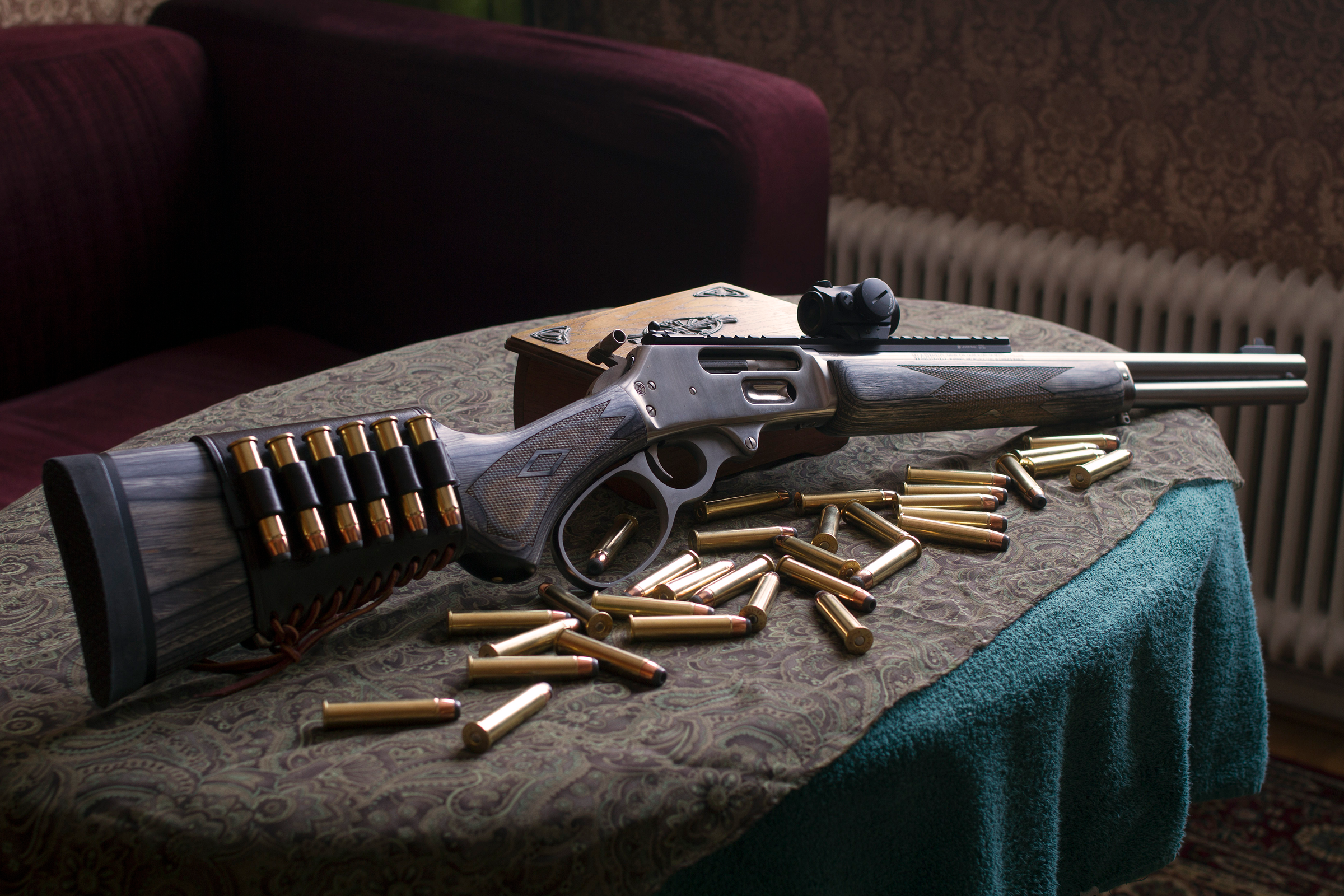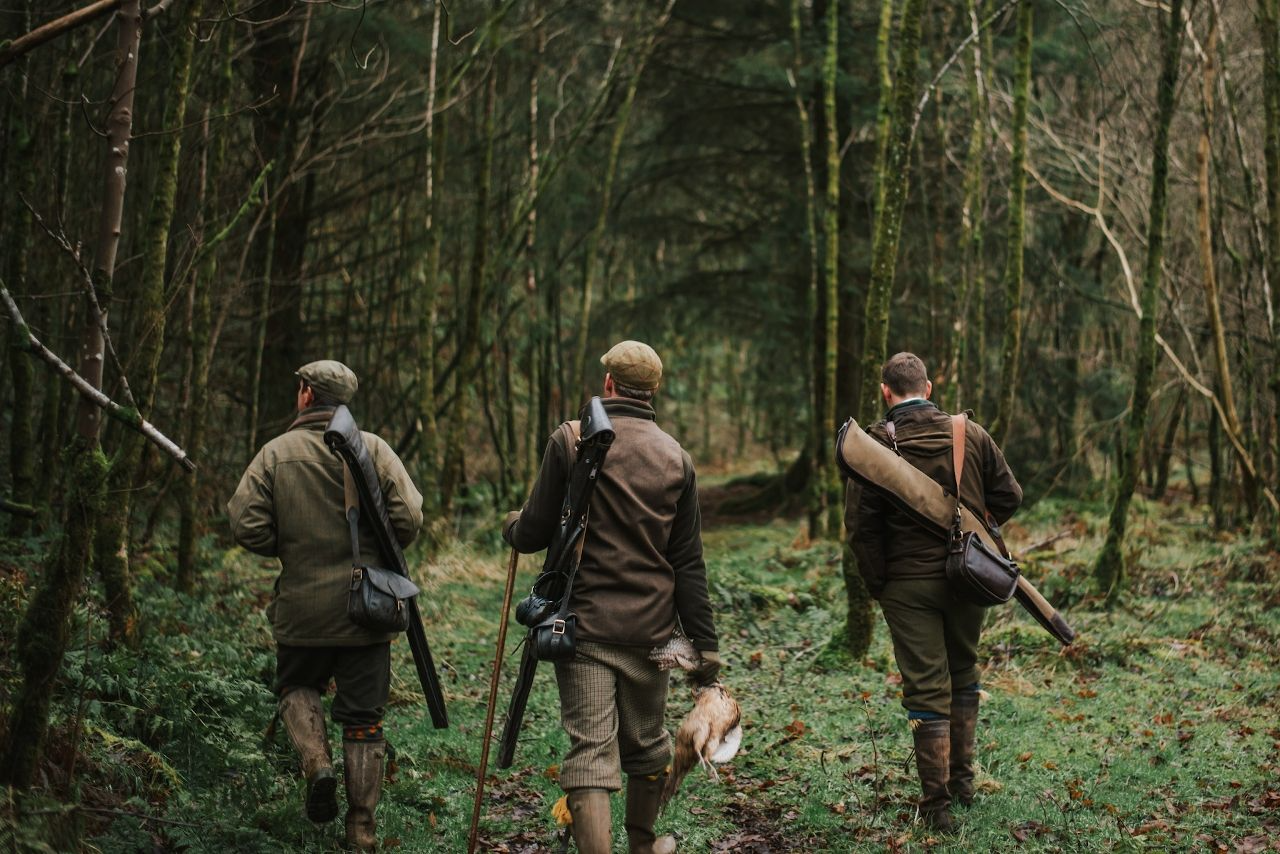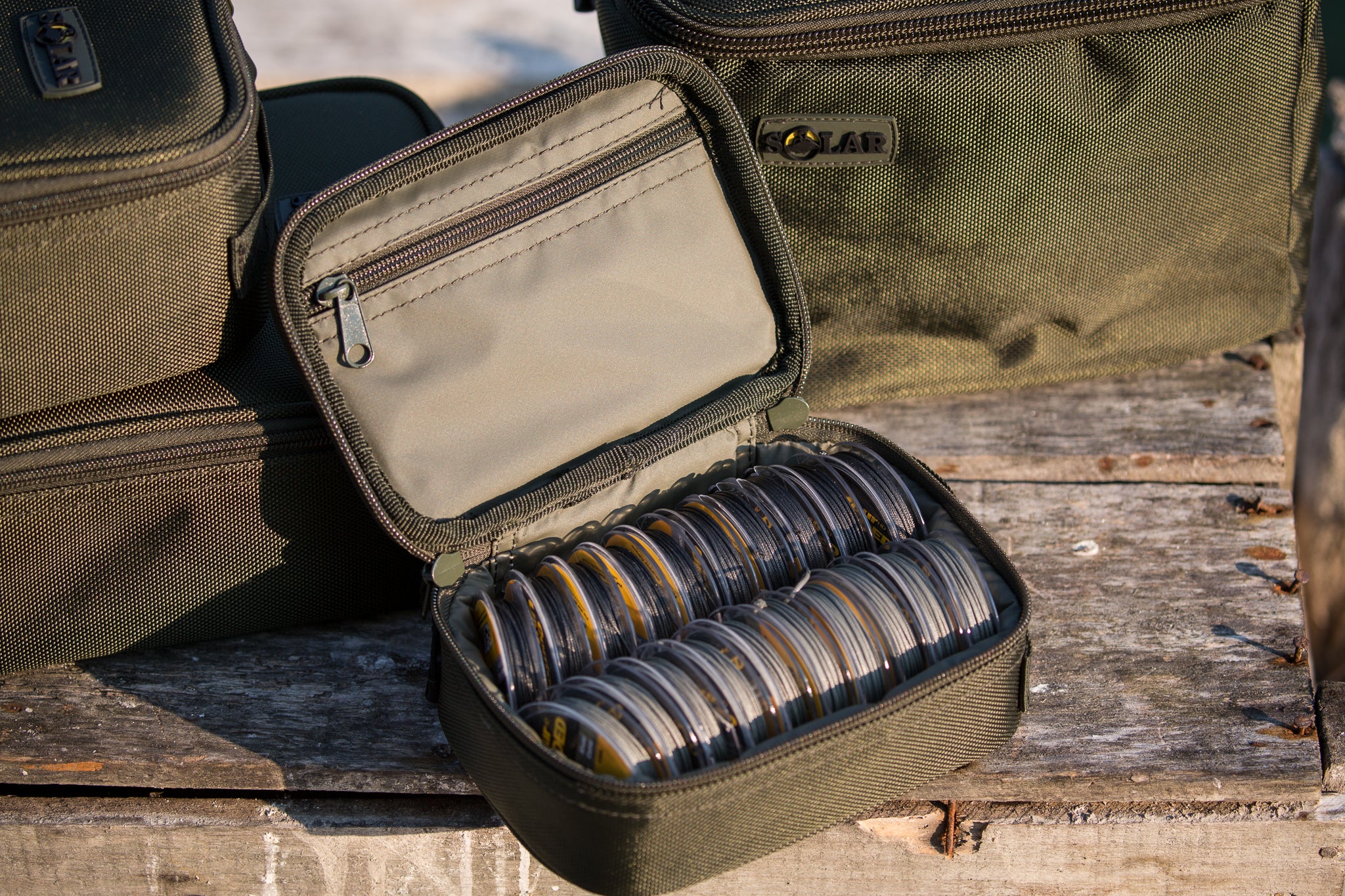Layering techniques for cold-weather hunting outfits
Layering techniques for cold-weather hunting outfits
Introduction
The basics of layering
The base layer: your second skin
The insulating layer: trapping heat
The outer layer: shielding from the elements
The science of staying warm
Thermoregulation: your body's balancing act
The insulation principle: how it works
Moisture management: stay dry, stay warm
Windchill factor: beating the bitter cold

Understanding the cold-weather environment
Temperature variations
The rollercoaster of cold
-
Diurnal temperature shifts: In many cold climates, daytime temperatures can be significantly warmer than nighttime temperatures. This fluctuation occurs because the earth absorbs and releases heat at different rates during the day and night.
-
Seasonal changes: Cold climates experience seasonal shifts, with winters being considerably colder than other times of the year. Understanding the seasonal patterns helps you prepare accordingly.
-
Microclimates: Even within a cold region, microclimates can exist. Factors like altitude, proximity to bodies of water, and local topography can create pockets of warmer or colder weather.
-
Extreme cold spells: Some regions experience occasional extreme cold spells, where temperatures plummet far below average. Being aware of the likelihood of such events is essential for your safety.
Wind chill factor
The biting influence of wind
-
Wind's cooling effect: When the wind blows, it whisks away the layer of warm air near your skin. This makes you feel much colder than the actual temperature. Wind can turn a brisk day into a bone-chilling ordeal.
-
Calculating wind chill: Meteorologists use the wind chill index to quantify how the combination of wind speed and temperature affects human perception. This index provides an accurate representation of how cold it will feel, helping you prepare adequately.
-
Dressing appropriately: Knowing the wind chill factor allows you to dress in a way that counters the wind's chilling effects. Layering, as discussed earlier, is a potent strategy to combat wind chill.
Humidity considerations
Moisture in the cold
-
Dry cold vs. wet cold: Cold air can be either dry or humid. Dry cold, typical in arid regions, can be harsh on your skin and respiratory system. Wet cold, prevalent in areas with high humidity, can feel even colder due to the increased heat conductivity of moisture.
-
Icy surfaces: Humidity levels also influence the formation of icy surfaces. Higher humidity can lead to the quicker formation of ice, making surfaces slippery and hazardous.
-
Clothing choices: Understanding humidity helps you choose the right clothing. In dry cold, moisturizing skin is crucial to prevent dryness and chapping. In wet cold, waterproof gear becomes essential.
The core layers
Base layer
1. Material selection
-
Merino wool: Renowned for its natural moisture-wicking properties and breathability, merino wool is an excellent choice. It keeps you warm when it's cold and cool when it's hot, making it a versatile option.
-
High-tech synthetics: Fabrics like polyester and polypropylene excel in moisture management. They efficiently wick sweat away from your skin, keeping you dry and preventing chills.
2. Moisture-wicking properties
Mid-layer
1. Insulation types
-
Down: This natural insulator is known for its exceptional warmth-to-weight ratio. Down traps warm air efficiently, making it a superb choice for lightweight, highly insulating mid-layers.
-
Fleece: Fleece fabrics provide warmth even when wet, making them an excellent choice for moisture-prone environments. They're breathable and comfortable, ideal for active pursuits.
2. Breathability
Outer layer
1. Shell materials
-
Gore-tex: A popular choice, Gore-Tex is a waterproof and breathable material. It's highly effective in keeping you dry while allowing sweat vapor to escape.
-
Nylon and polyester: These synthetic materials offer durability and water resistance. They're suitable for milder conditions but may lack the breathability of Gore-Tex.
2. Waterproofing vs. water resistance
-
Waterproof: A waterproof shell is impervious to water, making it suitable for heavy rain or snow. It keeps you dry in the harshest conditions.
-
Water-resistant: Water-resistant shells repel water to a certain degree but may eventually allow moisture to seep through in prolonged exposure. They are best for light rain or snow.
Extremity protection
Hands
1. Gloves vs. mittens
-
Gloves: Gloves offer more dexterity since they separate each finger. This makes them ideal for activities that require fine motor skills, like using a smartphone or handling small objects. However, they may sacrifice some warmth due to the separation of fingers.
-
Mittens: Mittens, on the other hand, group all your fingers together, maximizing warmth by allowing them to share heat. They're excellent for extreme cold but may limit your ability to perform intricate tasks.
2. Insulation and dexterity
-
Insulation: Look for gloves or mittens with proper insulation, such as down or synthetic fill. Thicker insulation provides more warmth but can reduce dexterity.
-
Dexterity: For activities like skiing or snowboarding that require both warmth and dexterity, consider gloves or mittens with built-in technologies like articulated fingers or touchscreen compatibility.
Feet
1. Socks
-
Material: Opt for moisture-wicking materials like merino wool or synthetic blends to keep your feet dry. Wet feet are more susceptible to cold.
-
Layering: Consider wearing moisture-wicking liner socks under insulating socks to enhance warmth and moisture management.
2. Boots and insulation
-
Boot types: Insulated winter boots are a must. Look for those with waterproof exteriors to keep moisture out. The choice between low-cut and high-cut boots depends on the level of protection and support you need.
-
Insulation: Insulated boots come with various insulation types, such as Thinsulate or PrimaLoft. The colder the conditions, the more insulation you'll need. Ensure your boots have a thermal rating suitable for your environment.
-
Fit: Proper boot fit is crucial. Leave enough room for warm air to circulate but not too much to cause friction or discomfort. Consider trying boots with removable liners for easy drying.
Headgear and face protection
Hats and headbands
1. Materials for warmth
-
Wool: Woolen hats are excellent choices for cold weather. They provide natural insulation and moisture-wicking properties, keeping your head warm and dry.
-
Fleece: Fleece headbands are lightweight and warm. They cover your ears, a vulnerable area, while allowing for better heat regulation on the top of your head.
-
Synthetics: High-tech synthetic materials offer both warmth and moisture management. Look for hats with thermal linings for added insulation.
2. Peripheral vision
-
Beanies: Beanies are classic choices for warmth but can limit your peripheral vision. Opt for those with a snug fit that covers your ears without obstructing your sight.
-
Headbands: Headbands offer warmth for your ears while leaving the top of your head exposed. They provide excellent peripheral vision, making them ideal for activities like running or hiking.
Face masks and balaclavas
1. Breathability
-
Mesh inserts: Some face masks and balaclavas feature mesh inserts around the mouth and nose area. This design enhances breathability, preventing moisture buildup.
-
Moisture-wicking fabrics: Choose options with moisture-wicking properties to prevent sweat from accumulating on your skin, which can lead to discomfort and chilling.
2. Full coverage vs. half coverage
-
Full balaclavas: Full balaclavas cover your entire face, leaving only openings for your eyes. They provide maximum protection against cold, wind, and snow, making them ideal for extreme conditions.
-
Half face masks: Half face masks cover your nose, mouth, and cheeks but leave your eyes exposed. They offer a balance between protection and visibility, making them suitable for less severe cold.
Accessories for extra warmth
Neck gaiters and scarves
1. Material choices
-
Wool: Woolen neckwear provides exceptional warmth and insulation, even when damp. It's an excellent choice for extreme cold.
-
Fleece: Fleece neck gaiters and scarves are lightweight, warm, and moisture-wicking. They're ideal for activities requiring breathability.
-
Synthetics: High-tech synthetic materials are often used for neck gaiters and scarves. Look for options with thermal linings for added warmth.
2. Versatility
-
Neck gaiters: Neck gaiters are versatile and can be pulled up to cover your face and ears or folded down as a simple neck warmer. They're perfect for active pursuits like skiing or hiking.
-
Scarves: Scarves provide more length and can be draped in various ways for different looks and levels of warmth. They're great for both style and function.
Hand and foot warmers
1. Types and duration
-
Disposable warmers: These single-use warmers provide a quick and convenient source of heat. They usually last for several hours and are perfect for short outings.
-
Reusable warmers: Reusable warmers can be activated multiple times by reheating them. They may have shorter durations but are eco-friendly and cost-effective in the long run.
2. Safe usage tips
-
Read instructions: Always read and follow the manufacturer's instructions for activation and usage.
-
Allow air circulation: Ensure that there's adequate air circulation around the warmer to prevent overheating or burning.
-
Don't apply directly to skin: Place warmers inside gloves or socks, or wrap them in a cloth to avoid direct contact with your skin.
-
Check for damage: Before use, inspect the warmers for any damage, such as leaks or punctures.
-
Proper disposal: Dispose of disposable warmers according to the manufacturer's guidelines. Some may contain materials that need special handling.
Proper fit and sizing
Layering without bulk
1. Sizing up vs. sizing down
-
Sizing up: If you prefer a looser fit or plan to layer multiple garments underneath, sizing up can provide the extra room you need without feeling constricted.
-
Sizing down: Sizing down works well when you want a snug, body-hugging fit. This approach reduces excess material and minimizes bulk while still allowing for layering.
2. Articulated vs. standard fit
-
Articulated fit: Articulated garments are tailored to follow the natural contours of the body. They provide better mobility and flexibility, making them ideal for active pursuits like skiing or climbing.
-
Standard fit: Standard fit garments have a more relaxed, traditional silhouette. They may offer a roomier feel, which can be advantageous for layering bulkier items like sweaters or vests.
Tailoring and adjustability
1. Importance of customization
-
Customization: Garments that offer customizable features, such as adjustable cuffs, hems, and waistbands, allow you to fine-tune the fit to your liking. This level of customization ensures that your layers work together seamlessly.
-
Tailored fit: Consider having essential outer layers, like jackets or coats, professionally tailored to achieve a precise fit. A well-tailored outer layer can accommodate multiple layers underneath without adding unnecessary bulk.
2. Layer integration
-
Layer compatibility: Choose layers that are designed to work together. Look for features like zippers, snaps, or attachment points that allow you to secure layers in place.
-
Eliminating gaps: Ensure that there are no gaps between your layers, as these can allow cold air to penetrate. Tuck in base layers, adjust cuffs, and secure zippers to seal any potential openings.
Cold-weather camouflage
Blending with the environment
1. Natural elements
-
Snow and ice: Choose clothing and gear in shades of white, gray, or pale blue to mimic the snowy landscape. This provides a neutral backdrop for your silhouette.
-
Foliage: In areas with evergreen trees, incorporate greens and dark browns into your camouflage. This helps break up your outline against the backdrop of coniferous trees.
-
Rocks and terrain: Mimic the colors of rocks or barren terrain if you're hunting or observing wildlife in rocky mountainous regions.
2. Texture and depth
-
3D camo: Some clothing and gear feature 3D patterns that create a sense of depth, helping you blend into the environment better.
-
Layering: Layering your clothing allows you to add texture and break up your outline. For instance, wearing a ghillie suit made of natural materials can provide exceptional concealment.
Specialized camo patterns
1. Snow camouflage
2. Winter woodland camouflage
3. Arctic camouflage
Reflectivity concerns
-
Sunlight: The sun's reflection off snow and ice can be blindingly bright. Choose gear with anti-reflective coatings and matte finishes to reduce glare.
-
Metallic components: Be cautious of metallic components on your gear, such as zippers or buckles, which can catch and reflect light. Consider covering or replacing them with non-reflective alternatives.
-
Face and hand coverings: Ensure that any exposed skin, such as your face and hands, is covered with non-reflective materials to avoid inadvertently alerting wildlife or other observers.
Mobility and comfort
Range of motion
1. Clothing design
-
Articulated design: Look for garments with articulated sleeves, knees, and elbows. These designs mimic your body's natural joint movements, allowing for unhindered motion.
-
Gussets and panels: Clothing featuring gussets or stretch panels in key areas like the shoulders and crotch provides extra flexibility and comfort during activities like hiking or hunting.
2. Stretchable materials
-
Spandex and elastane: Garments with spandex or elastane offer excellent stretch and recovery, ensuring that your clothing moves with you without losing its shape.
-
Hybrid fabrics: Some cold-weather gear combines traditional insulating materials with stretchable fabrics. These hybrids provide warmth and flexibility simultaneously.
Staying comfortable on long hunts
1. Ventilation
-
Zippers and vents: Clothing with zippered vents, such as underarm vents on jackets or zip-off legs on pants, allows you to regulate your body temperature by adjusting airflow.
-
Layering: Layering your clothing enables you to add or remove layers as needed to maintain comfort. Start with a moisture-wicking base layer and add insulating and outer layers as required.
2. Temperature regulation
-
Moisture management: Moisture-wicking base layers help keep sweat away from your skin, preventing discomfort and chills. Look for high-quality materials like merino wool or synthetics.
-
Insulation control: Use insulation strategically. When you're active, unzip or remove insulating layers to prevent overheating. Put them back on during periods of inactivity or extreme cold.
-
Accessories: Don't forget accessories like hats, gloves, and neck gaiters. These can be added or removed as needed to regulate your temperature.

Maintenance and care
Cleaning cold-weather gear
1. Washing techniques
-
Follow manufacturer's instructions: Always start by checking the care label or the manufacturer's instructions. Different materials and technologies may have specific washing requirements.
-
Use gentle detergent: Choose a gentle, specialized detergent designed for technical outdoor gear. Avoid using regular detergents, as they can damage waterproof coatings and insulation.
-
Machine washing: Most cold-weather gear, including jackets, pants, and base layers, can be machine washed. Use a front-loading machine to minimize agitation.
-
Hand washing: For delicate items like down jackets or merino wool base layers, hand washing in cold water with a gentle detergent is recommended. Gently agitate the water and rinse thoroughly.
2. Drying methods
-
Air drying: Whenever possible, air dry your gear by laying it flat on a clean surface or hanging it up. Avoid direct sunlight, as it can degrade certain materials.
-
Tumble drying: Some gear, like synthetic insulated jackets, may be suitable for tumble drying on low heat. Use tennis balls or dryer balls to help restore loft.
-
Down gear: For down items, use a dryer with low heat and add a few clean tennis balls to help break up clumps and restore loft. Check the care label for specific instructions.
Storage tips
1. Off-season maintenance
-
Clean before storing: Ensure that all gear is clean and completely dry before storing it. Lingering moisture can lead to mold and mildew.
-
Use storage bags: Store your gear in breathable storage bags or cotton sacks to prevent dust buildup while allowing air circulation.
-
Hang or fold: For items like down jackets, consider hanging them in a cool, dry place to maintain their loft. Fold other items neatly and store them in a clean, dry location.
2. Avoiding mold and mildew
-
Choose a dry location: Store your gear in a dry, well-ventilated area. Avoid damp basements or attics prone to temperature fluctuations.
-
Use desiccants: Place moisture-absorbing desiccants or silica gel packets in your storage bags to reduce humidity and prevent mold growth.
-
Regular inspection: Periodically inspect your gear during the off-season. If you notice any signs of mold or mildew, clean and dry the affected items immediately.
Layering for different seasons
Fall hunts
1. Base layer:
- Materials: Start with a lightweight, moisture-wicking base layer to keep sweat away from your skin.
- Long sleeves and pants: Opt for long-sleeved tops and pants to protect against brush and ticks.
2. Insulating layer:
- Light insulation: Choose a mid-weight insulating layer like a fleece or lightweight down jacket for added warmth.
- Vest option: A vest can provide extra core warmth without restricting arm movement.
3. Outer layer:
- Windproof and water-resistant: Your outer layer should be windproof and water-resistant to handle unpredictable fall weather.
- Camo or earth tones: Select gear in camo or earth tones to blend with the autumn landscape.
4. Accessories:
- Gloves and hat: Carry lightweight gloves and a hat for warmth and concealment.
- Neck gaiter: Consider a neck gaiter for added protection and camouflage.
Winter expeditions
1. Base layer:
- Heavyweight material: In extreme cold, choose a heavyweight thermal base layer to trap warmth.
- Moisture-wicking: Ensure it's moisture-wicking to prevent sweat accumulation.
2. Insulating layer:
- Thick insulation: Wear a thick, insulated jacket or parka with down or synthetic fill.
- Layering: For extremely cold conditions, consider adding an additional insulating layer like a down vest.
3. Outer layer:
- Waterproof and windproof: Your outer layer should be both waterproof and windproof.
- Snow gaiters: If trekking through snow, consider snow gaiters to keep snow out of your boots.
4. Accessories:
- Insulated gloves and mittens: Insulated gloves are essential, and mittens provide extra warmth when needed.
- Balaclava: A balaclava offers full-face coverage for extreme cold and wind protection.
Late spring/early summer
1. Base layer:
- Lightweight: Opt for a lightweight, breathable base layer to keep cool.
- Short sleeves: Short-sleeved tops and shorts are ideal for warm weather.
2. Insulating layer:
- Optional: In late spring and early summer, you may not need an additional insulating layer.
3. Outer layer:
- Light and breathable: Choose a lightweight and breathable outer layer that provides sun protection and can repel light rain if necessary.
- Insect-repellent: Consider clothing treated with insect repellent to ward off bugs.
4. Accessories:
- Sun hat: Wear a wide-brimmed sun hat for shade and sun protection.
- Sunglasses: Don't forget UV-protective sunglasses to shield your eyes.
Summary of layering principles
Key takeaways
1. Base layer:
- Moisture-wicking: Always start with a moisture-wicking base layer to keep sweat away from your skin.
- Weight selection: Choose the weight of your base layer based on the season and expected activity level.
2. Insulating layer:
- Thermal properties: Insulating layers trap heat and provide warmth. Select the insulation level based on the coldness of the weather.
- Layering options: Depending on conditions, you may need to add or remove insulating layers for temperature control.
3. Outer layer:
- Protection: The outer layer should provide protection against wind, rain, and snow.
- Versatility: Select an outer layer that suits the specific weather conditions and activities you'll be engaging in.
4. Accessories:
- Headgear and gloves: Don't forget to protect your extremities with appropriate headgear and gloves.
- Seasonal considerations: Choose accessories that are suitable for the season and weather challenges you'll face.
Importance of adaptability
- Seasonal shifts: Recognize that layering needs vary from season to season. Be prepared to adjust your layers accordingly.
- Unpredictable weather: Weather can be unpredictable, even in established seasons. Be ready to modify your layers in response to changing conditions.
- Activity level: Your activity level can impact your body temperature. Be flexible in adding or shedding layers as you become more or less active.
Frequently Asked Questions (FAQs)
A. What is the best base layer material for extreme cold?
B. Can I wear cotton in cold weather?
C. How do I prevent sweating when layering for cold weather?
- Choose moisture-wicking base layers to move sweat away from your skin.
- Adjust your layers as needed to regulate your body temperature during activity.
- Use ventilation options like zippered vents to release excess heat.
- Dress in layers that are appropriate for the level of activity and the weather conditions.
D. Is it better to overdress or underdress in extreme cold?
E. What should I do if I get wet in freezing temperatures?
F. Are there any emergency measures for extreme cold situations?
- Signal for help if needed.
- Find or create shelter from the wind and cold.
- Use insulation like dry leaves or clothing to insulate your shelter.
- Conserve energy and stay hydrated.
- Keep your core warm, as hypothermia is a major concern.
G. Can layering help with scent control during hunting?
H. Are there any specific layering considerations for bowhunters?
- Silent fabrics: Choose clothing made of quiet, rustle-free materials to avoid alerting game.
- Freedom of movement: Ensure that your layers allow for a full range of motion, especially in the arms and shoulders.
- Minimize bulk: Keep layers streamlined to avoid interference with drawing and shooting a bow.
- Weather protection: Prioritize weather-resistant outer layers to protect against wind and rain, which can affect arrow flight.
Conclusion
Reiterating the importance of layering
- Base layers: Moisture-wicking base layers keep you dry by moving sweat away from your skin.
- Insulating layers: The right level of insulation keeps you warm, and layering allows you to adjust to your activity level and the temperature.
- Outer layers: Your outer layer shields you from wind, rain, and snow, and should be chosen based on specific weather conditions.
- Accessories: Don't overlook the importance of gloves, hats, and other accessories that complete your layering system.
B. Preparing for your next cold-weather hunt
- Check the forecast: Stay informed about the weather conditions you'll encounter and plan your layers accordingly.
- Choose quality gear: Invest in high-quality clothing and gear that provide the right combination of warmth, protection, and durability.
- Practice adaptability: Be ready to adjust your layers as conditions change throughout the day.
- Safety first: Prioritize safety by overdressing slightly to guard against unexpected cold snaps or adverse weather.























